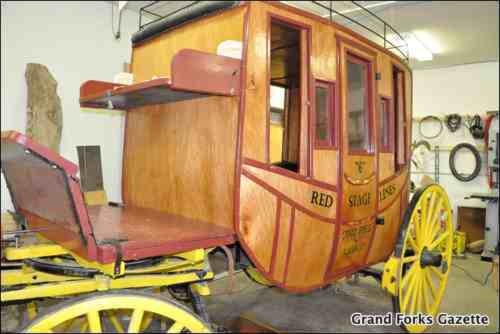Bossburg is a ghost town in Stevens County, Wash., and is located on the east bank of the Columbia River just south of the Canadian border and about 32.19 kilometres (20 miles) north of Colville.
In 1888, silver was discovered in the hills above the northern part of the Columbia River. The Young America mine was established and drew miners and their families. Soon the steady increase in population prompted the development of a small town.
A cable ferry, known as the Young America Landing, shuttled prospectors and freight wagons, bound for mining fields in British Columbia, across the Columbia River. There was no railroad into the Boundary area at that time so travelers went via Spokane, Wash. to Bossburg from where they went by stage the balance of the way.
Passengers had their choice of two stage lines: The Spokane Falls and Northern Railway’s trains were met by E.D. Morrison’s stage and Henderson and Martin’s Stage. After a tortuous journey, including crossing the Columbia River by ferry, they proceeded to Canada, crossing at Hall’s Ferry or Joseph Baulne’s and again at Edward’s Ferry, about 6.44 kilometres (four miles) from Cascade toward Grand Forks. On the return trip stages left Grand Forks at 4 a.m. to meet the 11 a.m. train in Bossburg.
Around the same time, the Chamber of Commerce in Spokane was encouraging miners heading north to use the new Spokane route. It claimed that outfits could purchase all their supplies in Spokane and that the prices would be such that money will be saved, even though duty must be paid at the line.
“It may be stated as a fact beyond contradiction that Spokane undersells the coast cities on almost every article that a prospector needs and has a better assortment of supplies, as the city has been the headquarters for prospectors for many years and her dealers have gained experience in the outfitting business,” it said.
A new stage line was eventually formed, using six Concorde stages. Unlike the heavy Conestoga bodies, the Concords were designed for mountain use. The coaches were low to the ground, with a light upper structure and pulled by teams of four horses. A hostler would lead the teams out to the stages only once the baggage had been secured and the passengers and driver were safely seated.
Once harnessed to the stage, the reins were given to the driver and he could release the brake. The stage horses often leaped and reared at the start of a trip but settled into a smooth trot once they were underway. The whip rarely had to be used to encourage them, as they knew the next station meant a good feed and a warm stable. Traveling horseshoers with portable forges visited the stage stations regularly.
An excellent example of this type of stage can be seen at the Boundary Museum in Grand Forks.
Originally restored in 1955 by Jim Bush and others of Midway, the Bossburg stage once again received a new lease on life when in 2011, the Boundary Woodworker’s Guild teamed up with the Boundary Museum Society to do a complete restoration of it.
The stagecoach made its debut at the Grand Forks and District Fall Fair this past weekend.
– Submitted by the Boundary Woodworker's Guild
